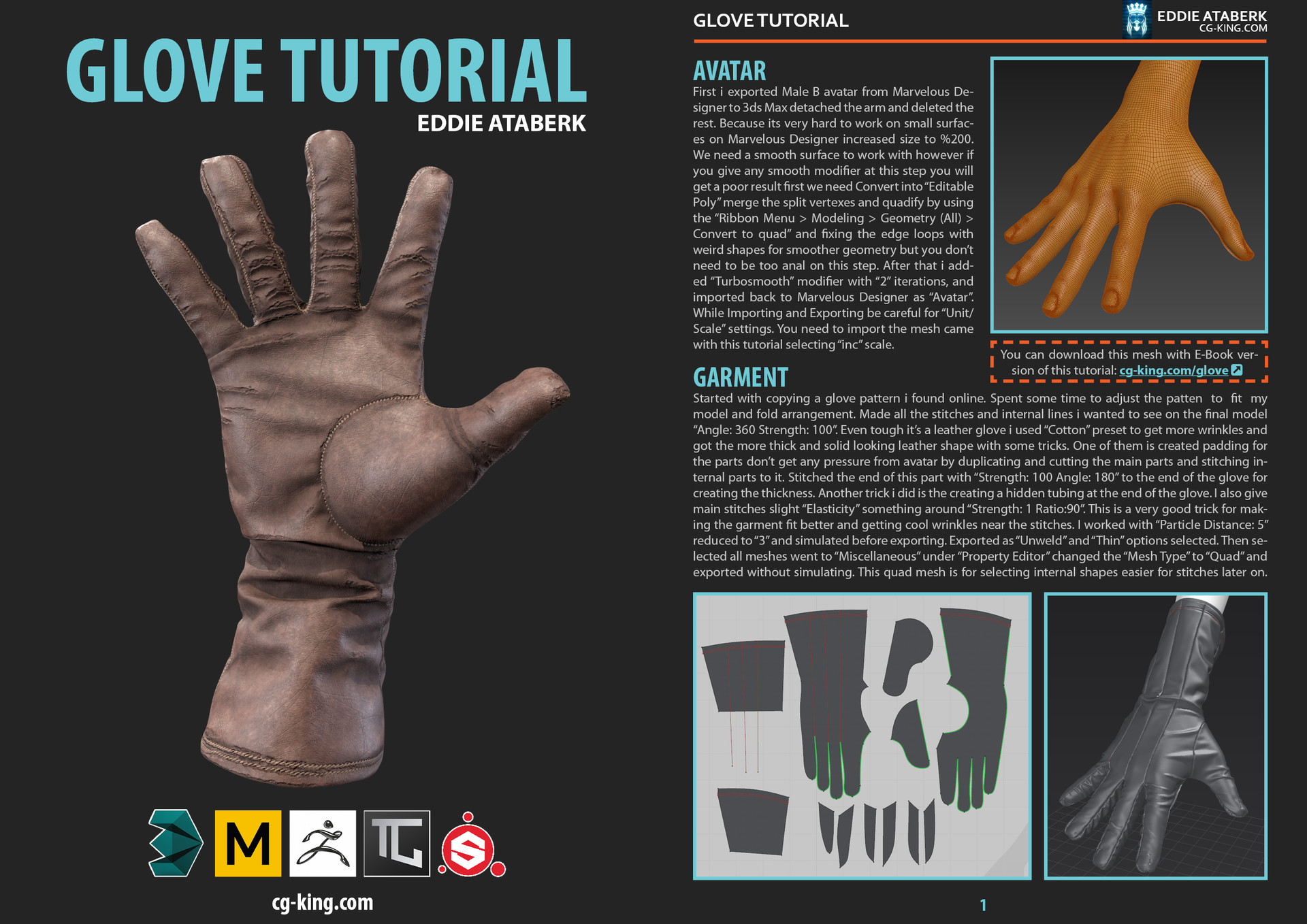Project Initation Report
For this specialisation project I want to direct my efforts towards organic modelling, specifically humanoid and / or character modelling as an extension of my work from previous trimesters. This high-quality organic character model will be constructed using a modern character pipeline, with emphasis on digital sculpting and use of physically-based rendered materials.

Visual examples of project goals.
- Gromokovskaya, I. (2017) Fishermen. Retrieved from https://www.artstation.com/artwork/EWG1v
- Zabala, R. (2015) Cartoon Troll. Retrieved from https://www.artstation.com/artwork/6wPQ5
- Gillet, L. R. (2015) AURECH. Retrieved from https://www.artstation.com/artwork/1wr8X
- Saint-Martin, B. R. (2017) Stylised Body Basemesh. Retrieved from https://www.artstation.com/artwork/AKK6X
The bulk of my in-depth research for this project will be focused towards topics that accompany organic modelling. More specifically, I aim to alternate between high-poly sculpting (as noted in the pipeline), texture pipelines (baking, creation, etc.) and lighting and presentation if the time allows.
Current Skillset
Prior to attending SAE for a Bachelor of Animation, my main passion was creating character concepts (specialising in humans, humanoids, anthromorphic, etc.) for my own original projects. Although I am still far from a professional level I have mastered my own style of character / art design to a degree that I’m content with.
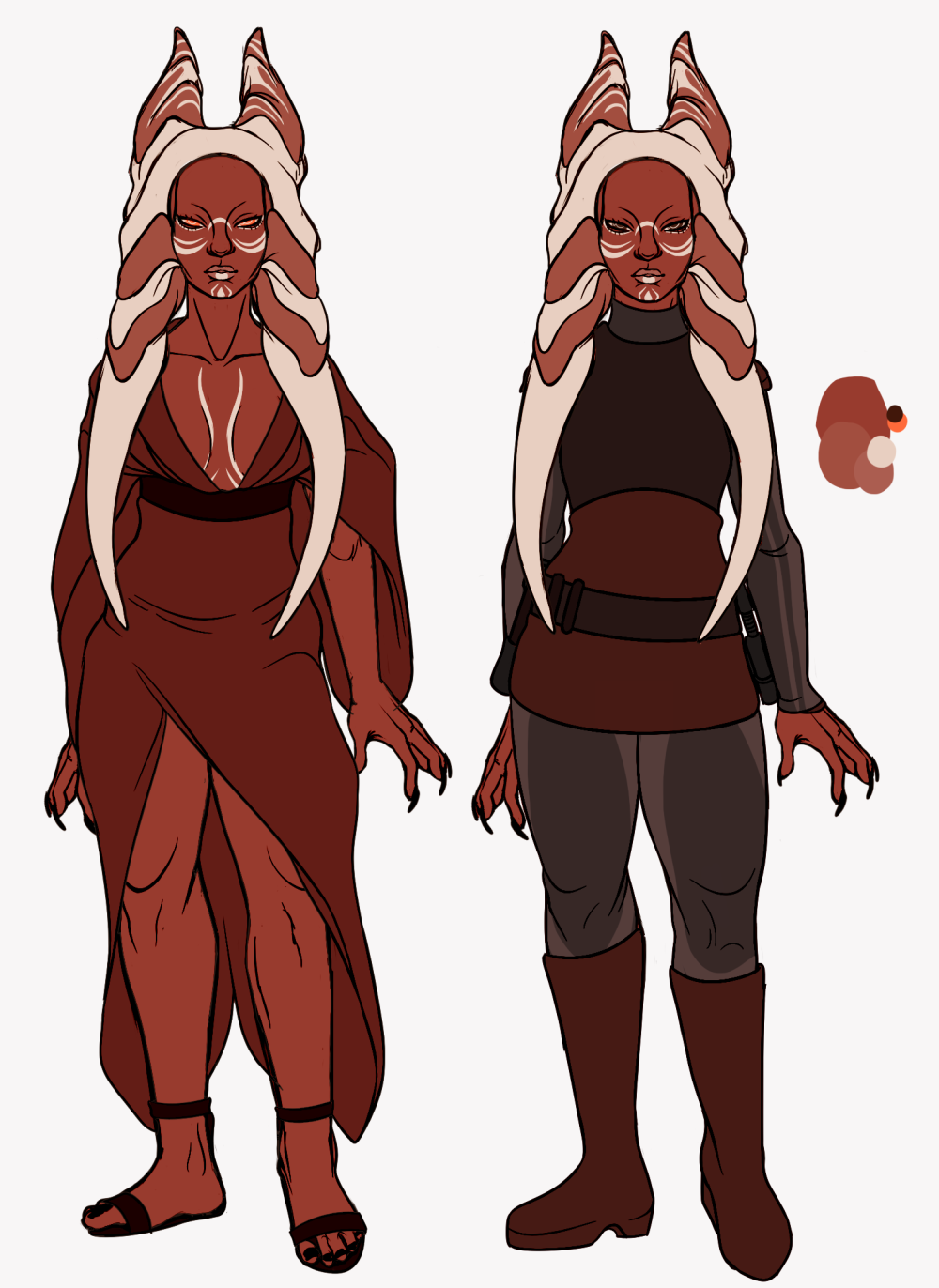
Star Wars Character Concept. 12th September 2017.
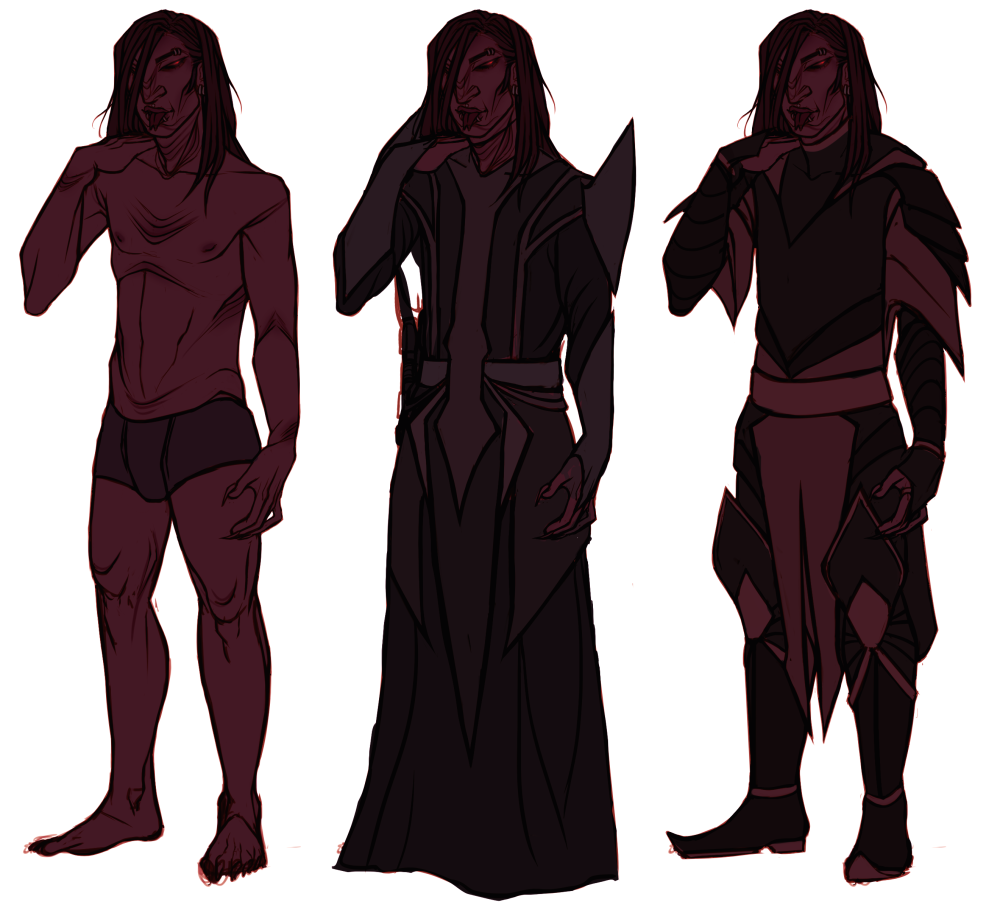
Original character concept. 17th July 2017.
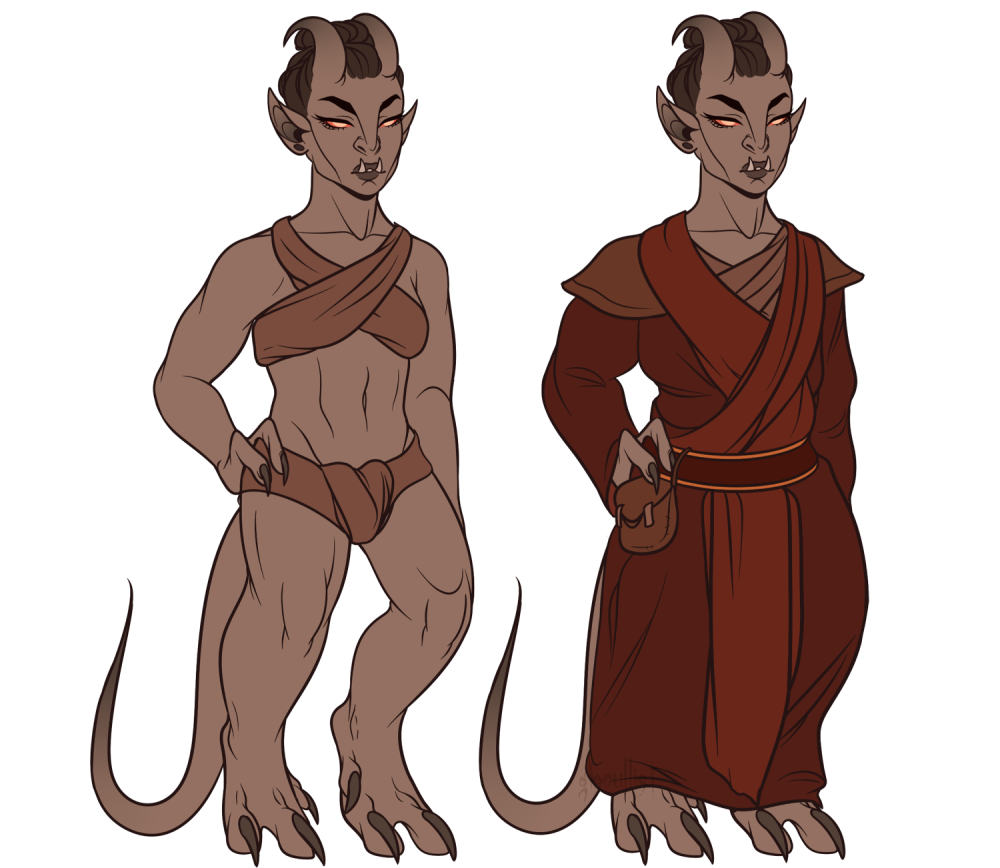
Character concept for potential webcomic project. 8th June 2017.
As the majority of my personal art is directed towards similar ventures in concept / character design, further exploring concept art as a specialisation would likely rob me of the opportunity to improve in other areas I struggle with, namely 3D character modelling or UV mapping.
Similarly, I have taken some of my personal time to delve into digital painting techniques, and have already secured many of the fundamentals. I mainly need to practise and hone these skills rather than consistently seek out resources to help aid the process.

11th September 2017.
Goals for this project
Over the course of the next few weeks I have set some specific goals that pertain both to my interest as improving as an artist and to ensure quality of the final product.
The quality of textures was a major downfall in my first and previous character model. Due to personal circumstances, the textures themselves were sub-par and only relied on an albedo channel. During this project I hope to expand on previous knowledge gathered and apply different channels when needed. If possible, I hope to apply digital painting knowledge in order to enhance facial features (and perhaps other areas of the model).
During the first two trimesters our standard program was 3Ds Max, and although it makes for a great basic program for specialising in hard surface / environmental assets, I would like to expand investigate a modern pipeline route of character modelling: digital sculpting. During my preliminary research I found that three main popular sculpting programs, Blender, Mudbox and Zbrush were common amongst artists and industry professionals. As for a set goal, I aim to increase my familiarity with at least one of these programs and create the majority of my character model within it.
Although I aim to be as diverse as possible with my skillset, for this specialisation course I want to pursue my interest in stylised character modelling, if possible.
To achieve these goals, my main aims are:
- To enhance the model, in addition to relying on maps generated by Quixel, Substance painter, etc. I aim to learn how to enhance normal maps manually, especially when regarding the face of a character model.
- Expand on my current skills as an artist and focus on dynamic turn-around sheets rather than my usual forward-facing reference sheets.
- Further research use of physically based rendering and texturing within character modelling and its wider application within the animation industry.
- Become knowledgeable on my chosen program; utilising provided literary resources, as well as PluralSight and Lynda online tutorials.
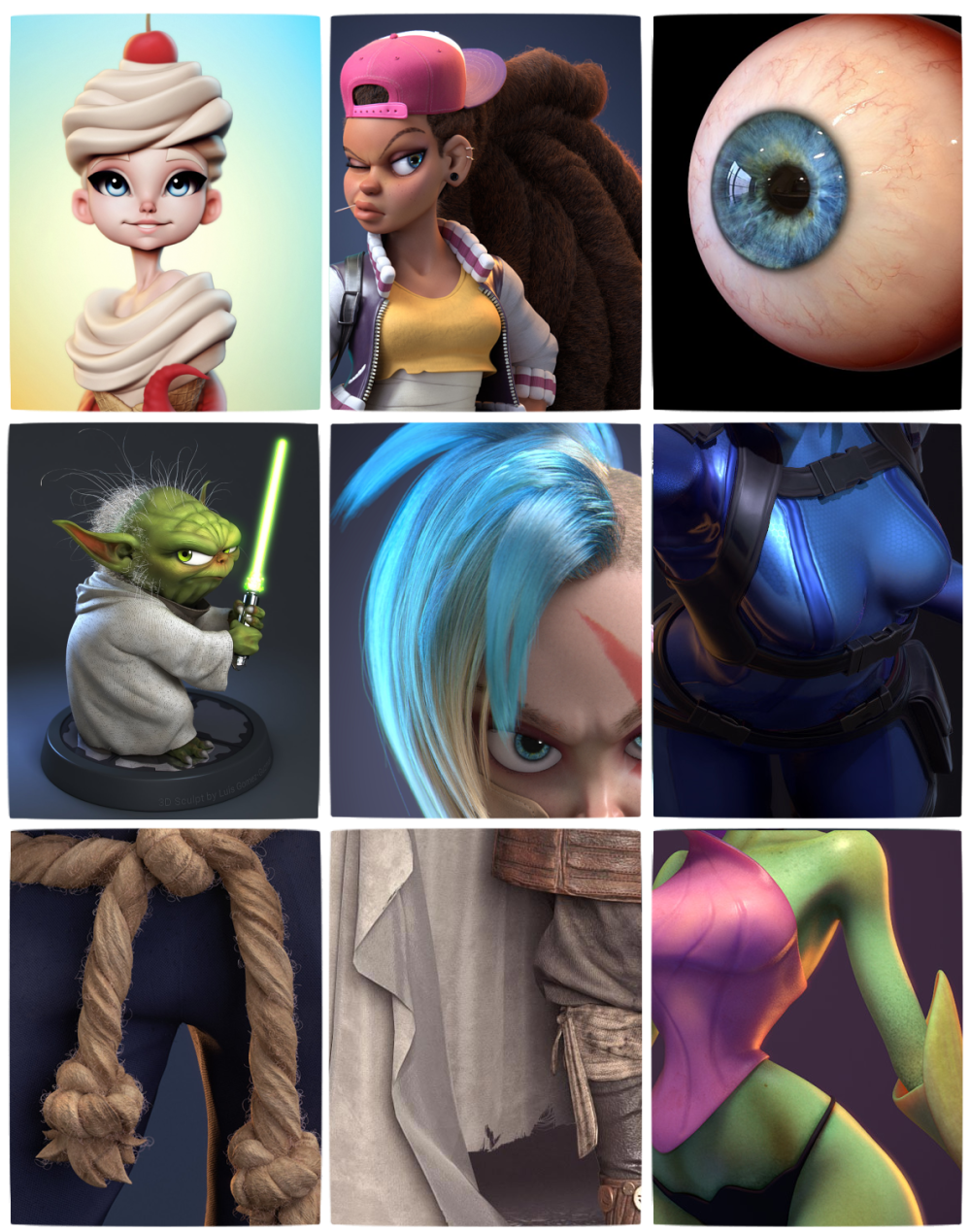
Visual style example references. Use of PBR shading noted.
Sources:
https://www.artstation.com/artwork/8dEEm
https://www.artstation.com/artwork/2xzbK
https://www.artstation.com/artwork/md5ad
https://www.artstation.com/artwork/o9AZW
https://www.artstation.com/artwork/B2B8r
https://www.artstation.com/artwork/aGm52
https://www.artstation.com/artwork/xvlEY
Preliminary Research
Sculpting Pipeline
Although it would be natural to assume that the character modelling pipeline would be an identical copy of the ones made use of in previous trimesters, with the addition of sculpting the process changes slightly.
In the modelling pipeline as described by Tironeac (2013), the first pass before sculpting is to create a low-poly base model with good starting topology to then be expanded on for higher poly sculpting within the chosen program. During this stage, it is useful to implement image planes within 3Ds Max to block out the main shapes within the character’s form, mainly with basic primitives and stitching, allowing for a more solid look at the character’s proportions and may outline any changes to be made during the early stages (Ward, 2011).
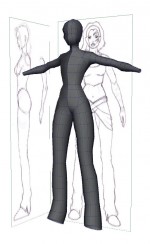
After then importing the mesh into the program (in his example, Zbrush) to be converted into polymeshes, as within Zbrush only meshes of this kind can be sculpted.
The main methods of sculpting from this point forward are generally restricted to four key tools, namely 3D brushes (categories include sculpting, smoothing, etc. and are open for customisation), masking (to create details and mesh subcomponents) and deformation (Tironeac, 2013).
*If this project was catered towards a game engine, it is likely that the artist will have to convert the model back to a low-poly standard for game use. To retain the look of the high poly model, a normal map with the impression of the high poly model is baked onto the lower poly model to adhere to game engine parameters.
Physically Based Rendering
For this project, the incorporation of Physically Based Rendering, or PBR, is suggested. This rendering / shading technique allows for a hyper-realistic representation of light interaction when compared to standard rendering (McDermott as cited in Sketchfab, 2017).
PBR extends on common shader functions such as the following:
- Diffusion and reflection (reflective light and scattered light (external and external)
- Translucency and transparency (further taking into account the width of the object, e.g. if thin enough objects can have light scatter out the back and can be almost entirely transparent)
- Energy conservation
- Metals (takes into account physical properties; such as electrical conductivity (which influences reflectivity), etc.)
- Fresnel (refers to differing reflectivity dependant on the angle)
- Microsurfaces (real-world surfaces have imperfections, flaws to prevent uniform surfaces)
(Russell, 2015).
Potential sources for further investigation:
Project
Video Sources:
Literary Sources:
- Brilliant, K. (2002) Building a Digital Human. Charles River Media. Retrieved from https://ebookcentral.proquest.com/lib/saemulti/detail.action?docID=3135664
- Gaboury, P. (2012) Zbrush Professional Tips and Techniques. John Wiley & Sons, Incorporated. Retrieved from https://ebookcentral.proquest.com/lib/saemulti/detail.action?docID=821773
- Keller, E. (2012) Introducing Zbrush. John Wiley & Sons, Incorporated. Retrieved from https://ebookcentral.proquest.com/lib/saemulti/detail.action?docID=832608
- Mattingly, D. B. (2011) The Digital Matte Painting Handbook. Wiley. Retrieved from https://ebookcentral.proquest.com/lib/saemulti/detail.action?docID=706901
- Ratner, P. (2012) 3D Human Modeling and Animation. John Wiley & Sons, Incorporated. Retrieved from https://ebookcentral.proquest.com/lib/saemulti/detail.action?docID=915629
- Spencer, S. (2010) ZBrush Digital Sculpting Human Anatomy. John Wiley & Sons, Incorporated. Retrieved from https://ebookcentral.proquest.com/lib/saemulti/detail.action?docID=479918
- Watkins, A. (2012) Getting Started in 3D with Maya: Create a Project from Start to Finish – Model, Texture, Rig, Animate and Render in Maya. CRC Press. Retrieved from https://ebookcentral.proquest.com/lib/saemulti/detail.action?docID=867674
- Wise, D. & Anderson, M. (2011) Secrets of ZBrush Experts: Tips, Techniques, and Insights for Users of All Abilities. Course Technology & Cengage Learning. Retrieved from https://ebookcentral.proquest.com/lib/saemulti/detail.action?docID=3136504
Internet Sources:
- https://www.artstation.com/artwork/0gNYV
- https://www.artstation.com/artwork/VRV3N
- https://cgi.tutsplus.com/series/game-character-creation-series-kila–cg-31010
- http://www.artofluis.com/character-creation-for-videogames/
PluralSight / Lynda Tutorials:
- https://app.pluralsight.com/library/courses/texture-painting-zbrush-1430/table-of-contents
- https://app.pluralsight.com/paths/skills/zbrush-core-skills
- https://app.pluralsight.com/library/courses/sculpting-female-torsos-zbrush-1388/table-of-contents
- Bradley, C. (2016) What is PBR? Retrieved from https://www.lynda.com/Blender-tutorials/What-PBR/437278/478696-4.html
Research Topics
- https://www.lynda.com/3ds-Max-tutorials/Game-Art-Asset-Texture-Pipeline/420012-2.html Game Art Asset Texture pipeline
- Spencer, S. (2008) ZBrush Character Creation: Advanced Digital Sculpting. Wiley. Retrieved from https://ebookcentral.proquest.com/lib/saemulti/detail.action?docID=353522
- Gahan, A. (2013) 3Ds Max Modeling for Games: Insider’s Guide to Game Character, Vehicle and Environment Modelling. CRC Press. Retrieved from https://ebookcentral.proquest.com/lib/saemulti/detail.action?docID=716262
- Ward, A. (2008) Game Character Development: Digital Sculpting for the Realtime Artist. Course Technology. Retrieved from https://ebookcentral.proquest.com/lib/saemulti/detail.action?docID=3136076
- Pharr, M. & Humphreys, G. (2004) Physically Based Rendering: From Theory to Implementation. Elsevier Science. Retrieved from https://ebookcentral.proquest.com/lib/saemulti/detail.action?docID=404938
- Pearl, J. (2016) Becoming a Video Game Artist: From Portfolio Design to Landing the Job. CRC Press. Retrieved from https://books.google.com.au/books?id=oDmLDQAAQBAJ&printsec=frontcover#v=onepage&q&f=false
- Space Bullet Dynamics Corporation (2015) Painting Pictures: Our Texture Building Process. Retrieved from http://www.voxmachinae.com/articles/2015-03-02_texture_pipeline.shtml
- 3dtotal.Com, (2012) Digital Art Masters: Volume 4. CRC Press. Retrieved from https://ebookcentral.proquest.com/lib/saemulti/detail.action?docID=472884
- Litster, C. (2011) Blender 2.5 Materials and Textures Cookbook. Packt Publishing. Retrieved from https://ebookcentral.proquest.com/lib/saemulti/detail.action?docID=1561433
- Williamson, J. (2011) Character Development in Blender 2.5. Course Technology / Cengage Learning. Retrieved from https://ebookcentral.proquest.com/lib/saemulti/detail.action?docID=3136468
- Lanier, L. (2015) Advanced Maya Texturing and Lighting. John Wiley & Sons, Incorporated. Retrieved from https://ebookcentral.proquest.com/lib/saemulti/detail.action?docID=353359
- Strong, B. (2007) Creating Game Art for 3D Engines. Course Technology. Retrieved from https://ebookcentral.proquest.com/lib/saemulti/detail.action?docID=3135997
- Summers, D. (2004) Texturing: Concepts and Techniques. Charles RIver Media. Retrieved from https://ebookcentral.proquest.com/lib/saemulti/detail.action?docID=3135728
- Lanier, L. (2011) Maya Studio Projects Texturing and Lighting: Texturing and Lighting. Wiley. Retrieved from https://ebookcentral.proquest.com/lib/saemulti/detail.action?docID=693513
- Franson, D. (2004) Dark Side of Game Texturing. Course PTR. Retrieved from https://ebookcentral.proquest.com/lib/saemulti/detail.action?docID=3135578
- Chopine, A. (2012) 3D Art Essentials: The Fundamentals of 3D Modeling, Texturing, and Animation. CRC Press. Retrieved from https://ebookcentral.proquest.com/lib/saemulti/detail.action?docID=680847
- Olano, M., Hart, J., Heidrich, W. & McCool, M. (2002) Real-Time Shading. CRC Press. Retrieved from https://ebookcentral.proquest.com/lib/saemulti/detail.action?docID=1019604
- Akenine-Möller, T., Haines, E. & Hoffman, N. (2008) Real-Time Rendering, Third Edition. CRC Press. Retrieved from https://ebookcentral.proquest.com/lib/saemulti/detail.action?docID=1633247
- Powell, A. W. (2010) Blender 2.5 Lighting and Rendering: Bring your 3D world to life with lighting, compositing and Rendering. Packt Publishing. Retrieved from https://ebookcentral.proquest.com/lib/saemulti/detail.action?docID=1561435
- St-Laurent, S. (2004) Shaders for Game Programmers and Artists. Thomson. Retrieved from https://ebookcentral.proquest.com/lib/saemulti/detail.action?docID=3135635
- Russell, J. (2015) Basic Theory of Physically-Based Rendering. Retrieved from https://www.marmoset.co/posts/basic-theory-of-physically-based-rendering/
Works cited
- Tironeac, G. (2013) The Pipeline Behind Modelling and Animating a Game Character in Zelgor. Retrieved from https://assist-software.net/blog/pipeline-behind-modeling-and-animating-game-character-zelgor
- Ward, A. (2011) How to create character models for games: 18 top tips. Retrieved from http://www.creativebloq.com/how-create-character-models-games-18-top-tips-9113050
- Sketchfab (2017) Materials (PBR). Retrieved from https://help.sketchfab.com/hc/en-us/articles/204429595-Materials-PBR?utm_source=website&utm_campaign=pbr_landing#general
Russell, J. (2015) Basic Theory of Physically-Based Rendering. Retrieved from https://www.marmoset.co/posts/basic-theory-of-physically-based-rendering/



